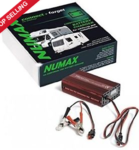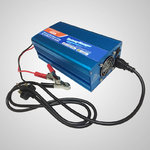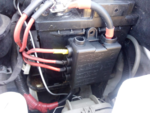Londonboii
Free Member
- Messages
- 42
I am considering adding a 12v transformer to my system in order to be able to isolate the batteries when on Hook up and run all the 12V via a transformer. Seems a waste to be on hook up and still use the batteries when they could take the opportuniy to get a really good charge.
Will this work and is it worth doing? The transformer is 12v 300W 25A
I realise I will need to make sure to switch the transformer off when I am off hook up as I could end up running the 12v from the transformer via the inverter but I think if the selector switches are beside each other this is unlikely. Are there any other downsides I may not have considered?
Images of screenshots below although I have added the PDFs also as the images are quite blurry.
My current setup

Here is what I am suggesting, adding transformer with switch

So I will end up with this setup

Will this work and is it worth doing? The transformer is 12v 300W 25A
I realise I will need to make sure to switch the transformer off when I am off hook up as I could end up running the 12v from the transformer via the inverter but I think if the selector switches are beside each other this is unlikely. Are there any other downsides I may not have considered?
Images of screenshots below although I have added the PDFs also as the images are quite blurry.
My current setup

Here is what I am suggesting, adding transformer with switch

So I will end up with this setup







